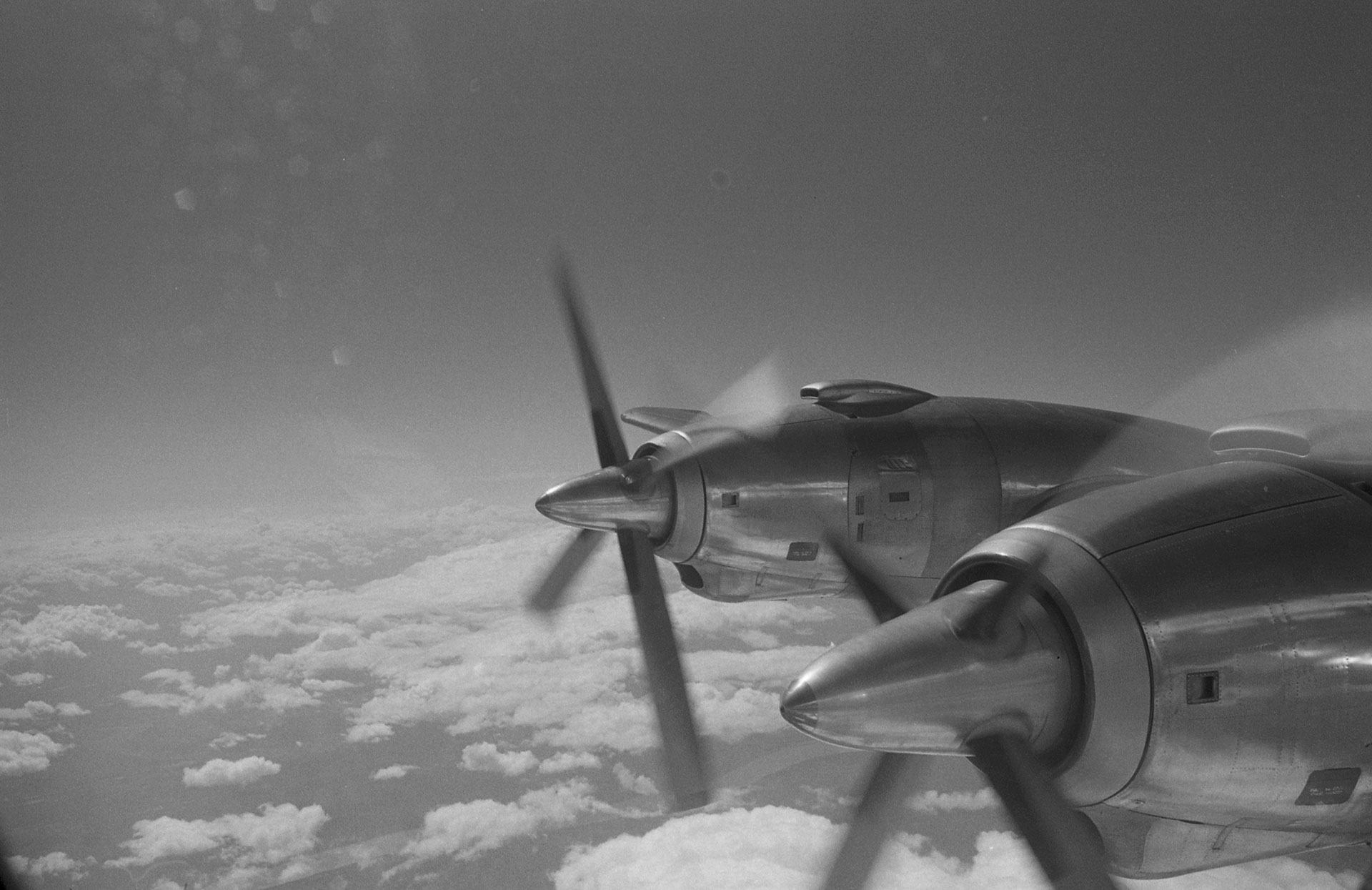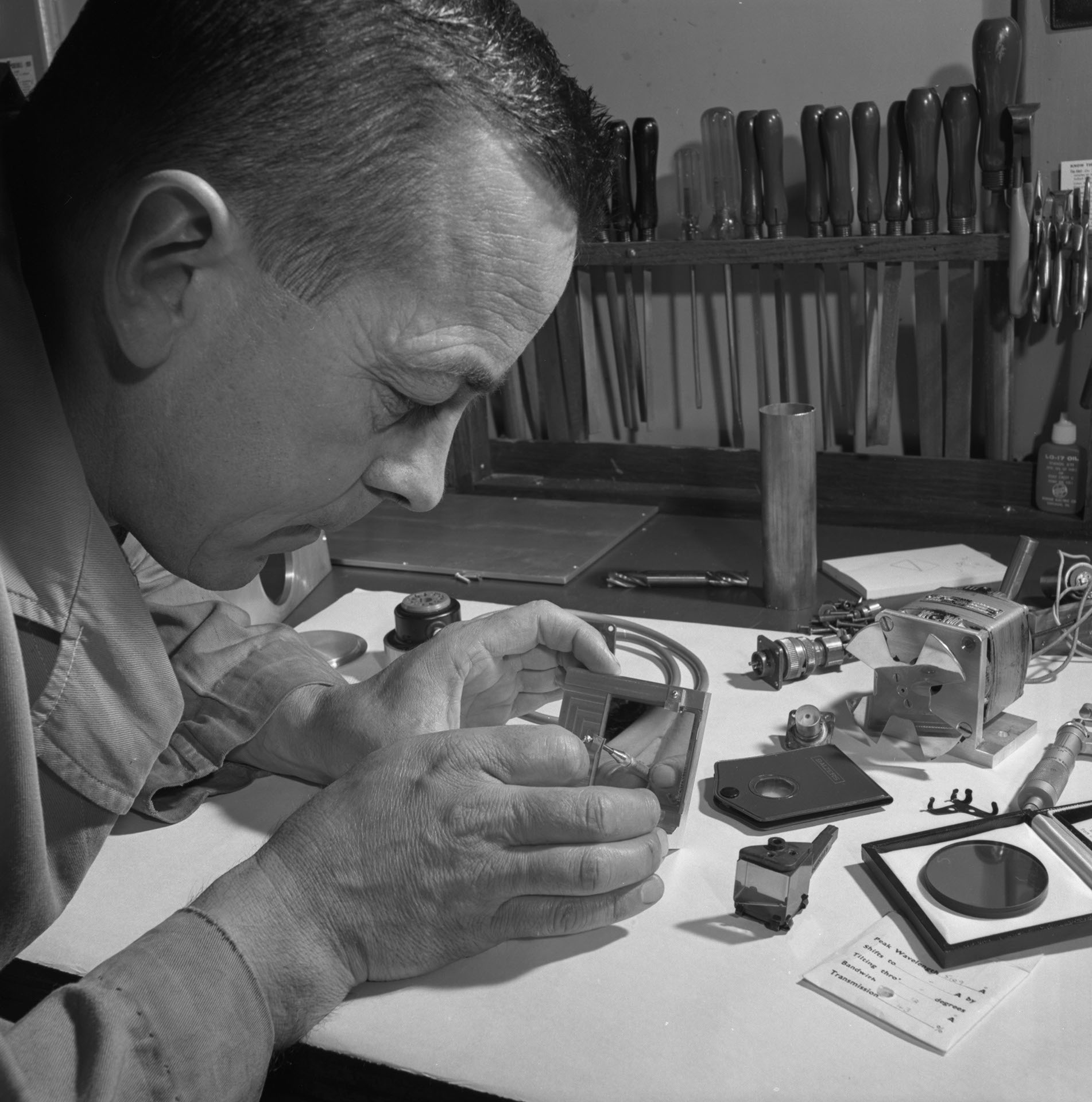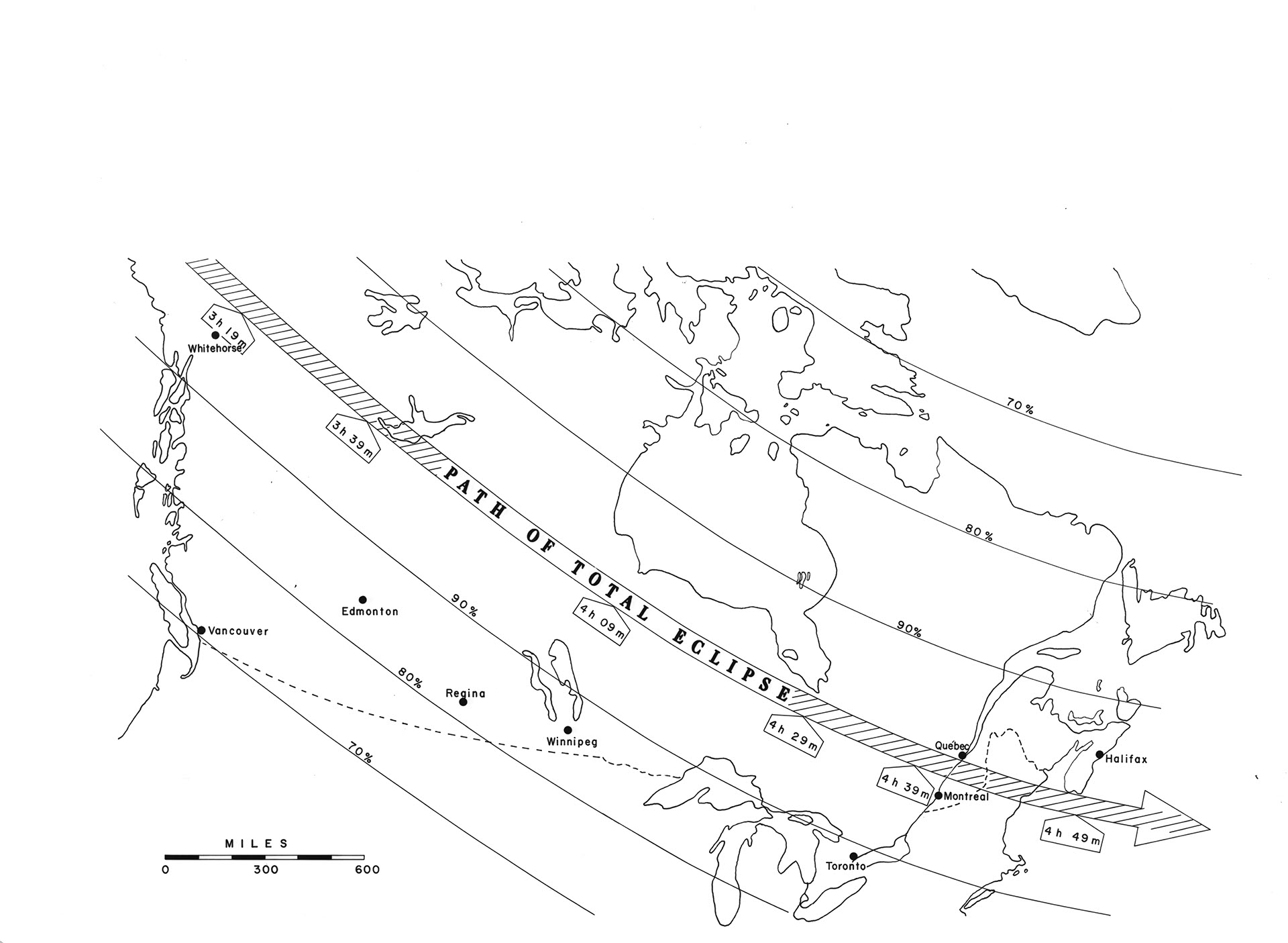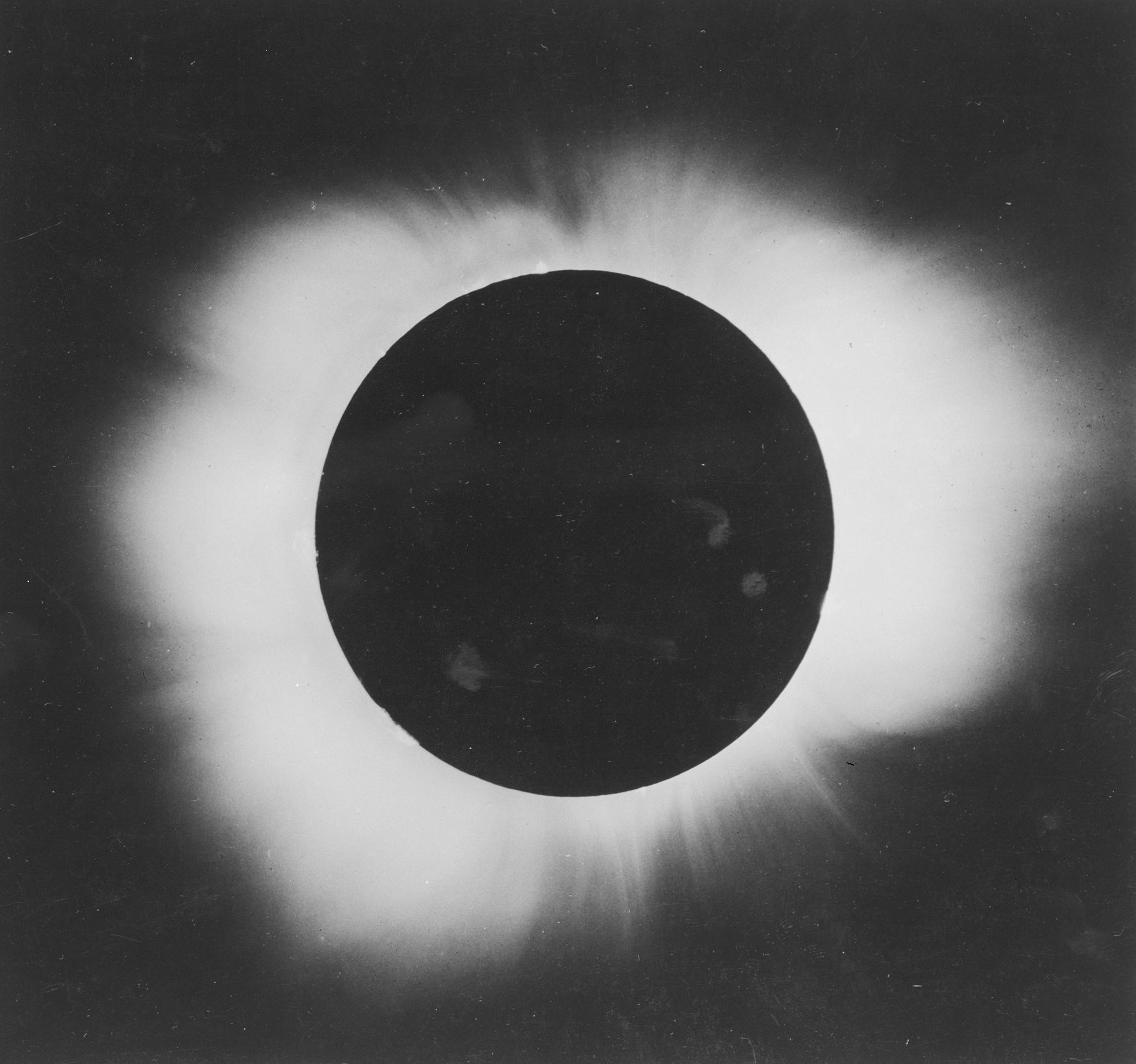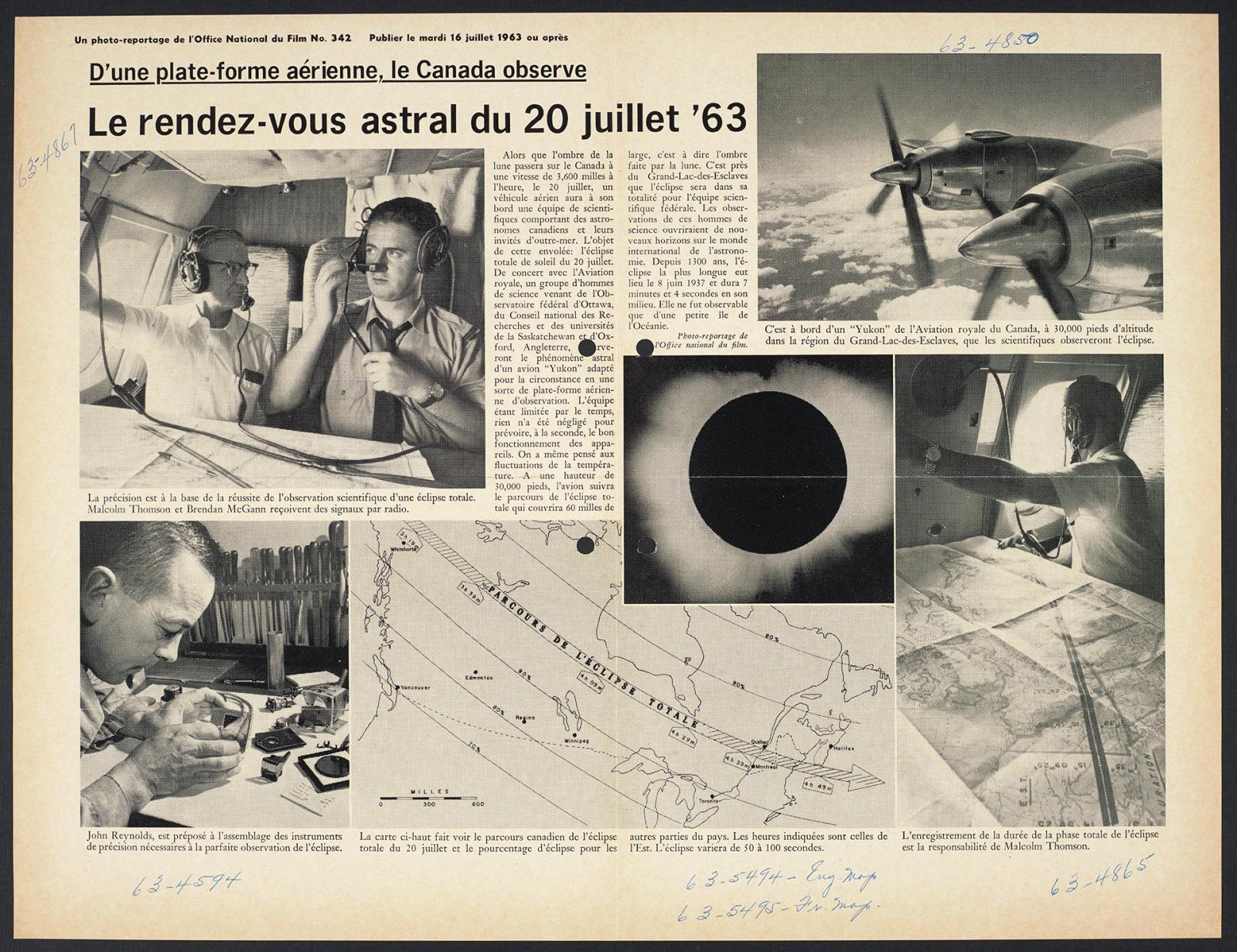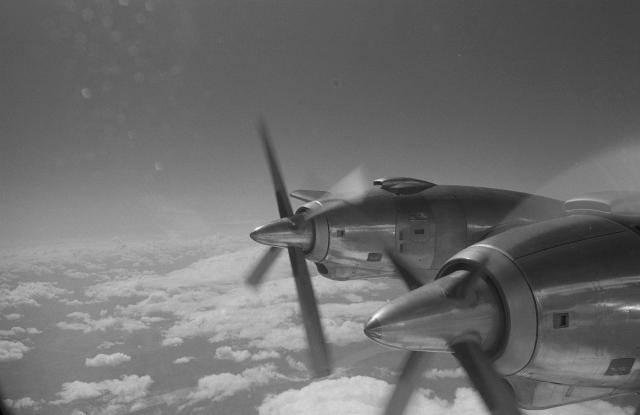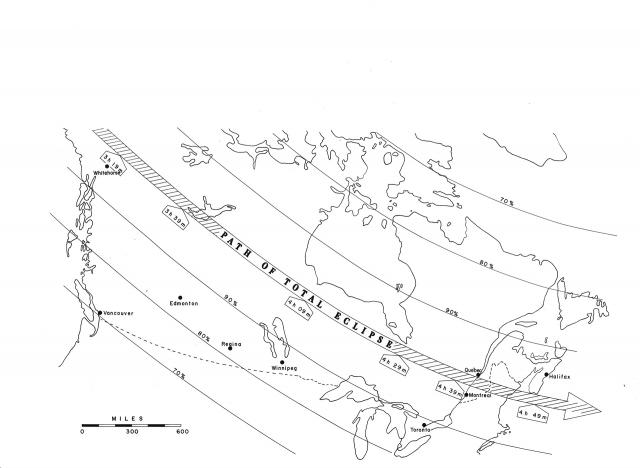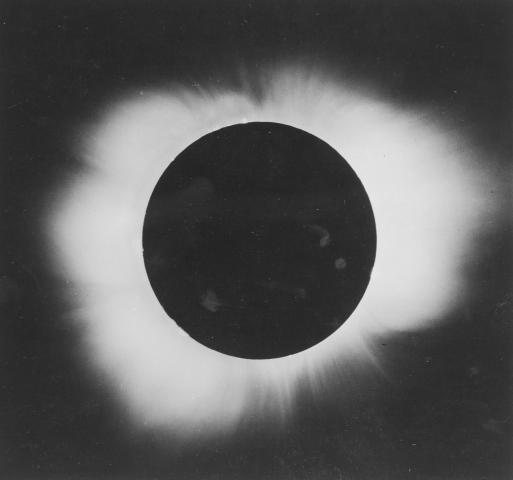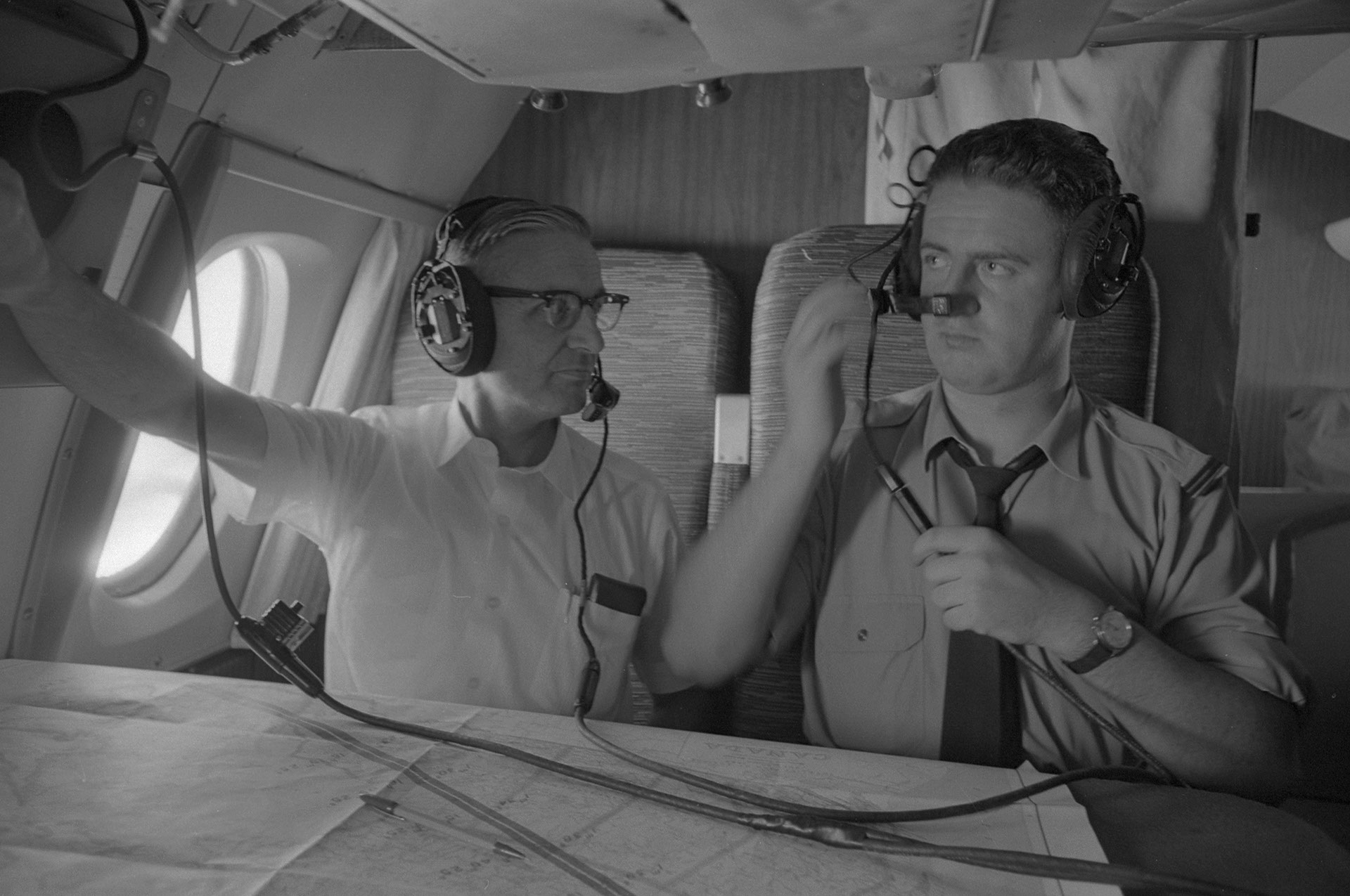
Photostory #342: Six-Mile-High Viewing Platform For Solar Rendezvous: Canadian Astronomers Ready to Record Eclipse
Photographers
,
,
Maker
National Film Board of Canada
Release Date
July 16, 1963
Collection
CMCP fonds
Credit Line
Canadian Museum of Contemporary Photography fonds, National Gallery of Canada Library and Archives
Main Text
As the moon's shadow sweeps across Canada at speeds up to 3,600 miles an hour, on July 20, a high-flying scientific expedition of Canadian astronomers and their guests from overseas will be studying the phenomena of total solar eclipse. In co-operation with the R.C.A.F., scientists from the Dominion Observatories, National Research Council, and the universities of Saskatchewan and Oxford, England, will use a specially-adapted Yukon aircraft as a 30,000-foot-high observing platform. With months of careful planning, designing and testing of intricate equipment culminating in a tense 100 seconds of action-packed activity, Canada's scientists have left little to chance in securing their observations. At a height of nearly six miles (above any obscuring clouds that may be present) the Yukon observation plane will be positioned on the centre line of the 60-mile-wide path of totality, flying in the direction taken by the moon's shadow. Place of rendezvous is scheduled near Great Slave Lake, N.W.T., where the time of eclipse is noon local time, giving observers a clear view on the beam. Visual and photoelectric observations, made while the blinding light of our local star is momentarily blotted out by the moon's disc, will add to man's knowledge of the sun -- controlling factor in earthly environment.
Subjects:
Locations:

